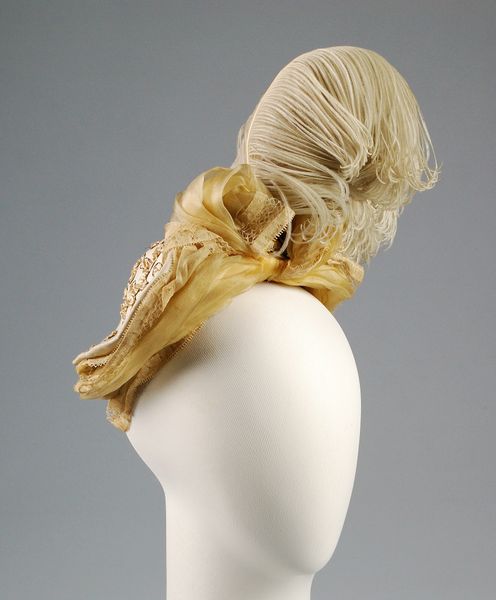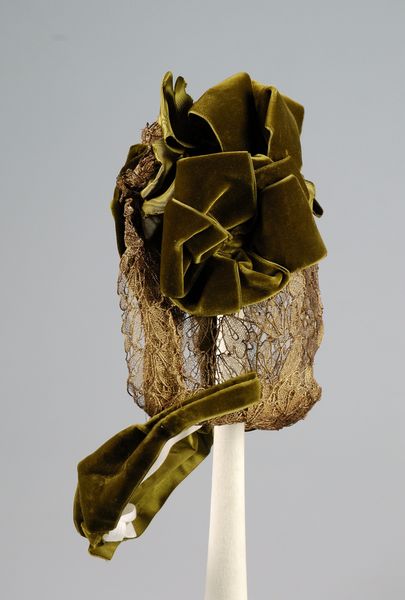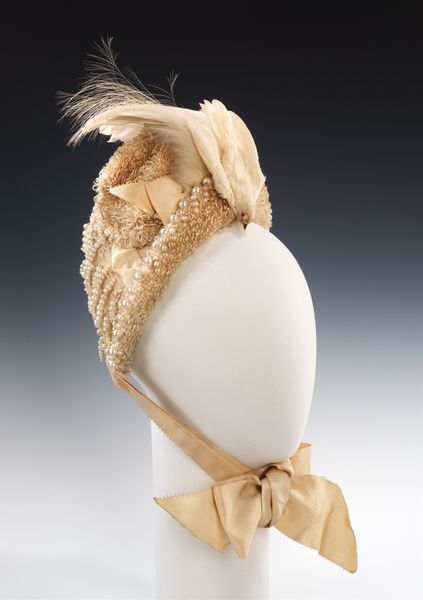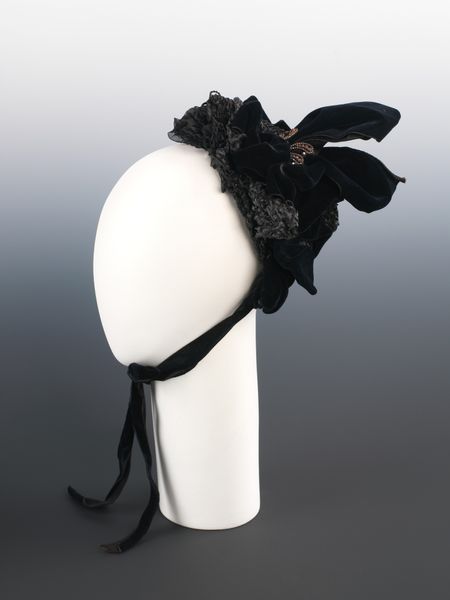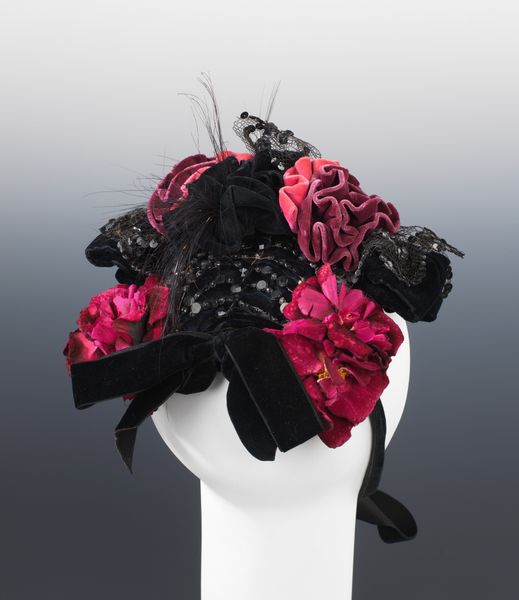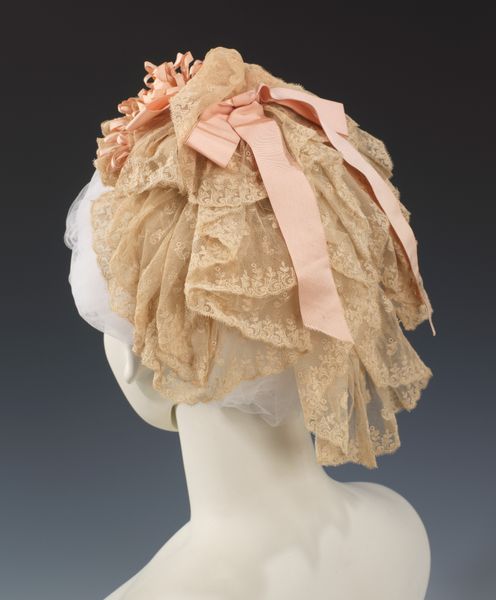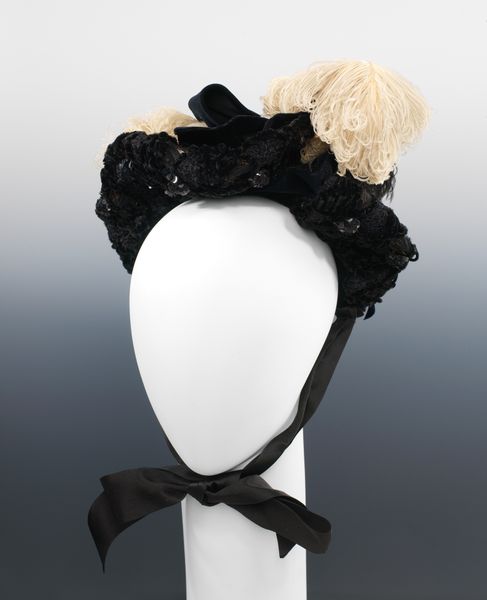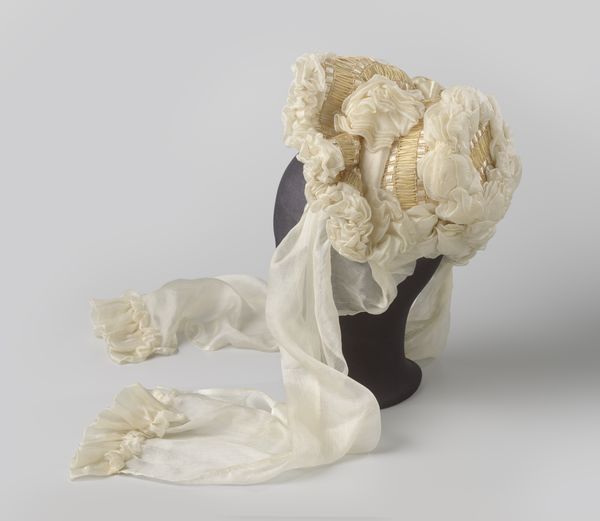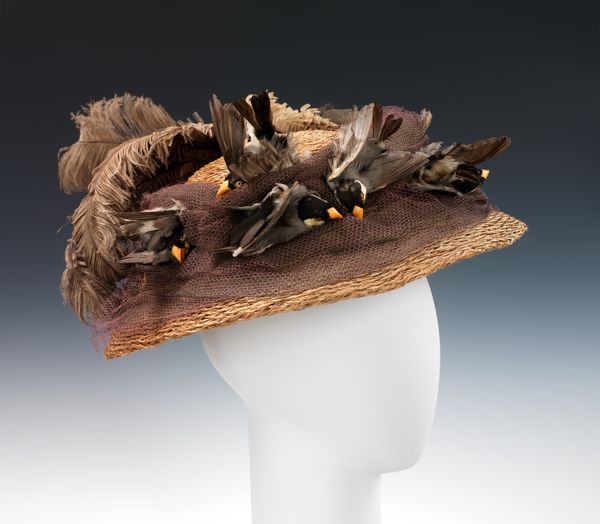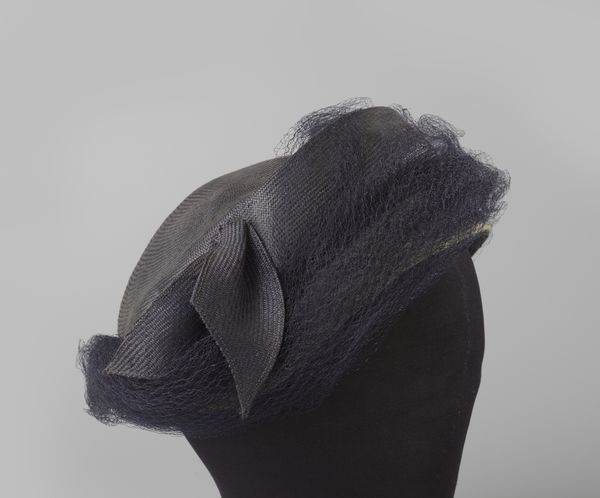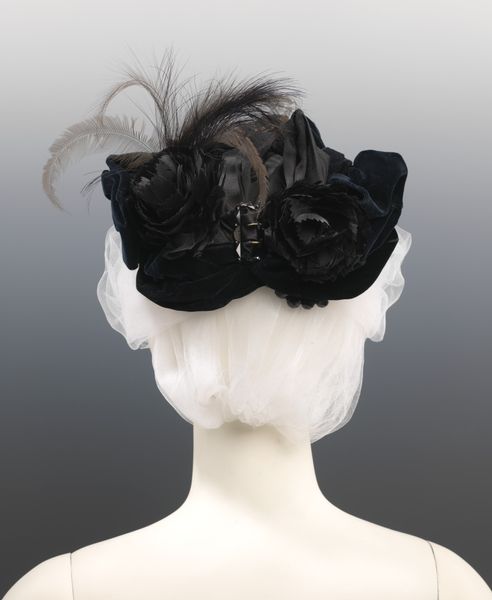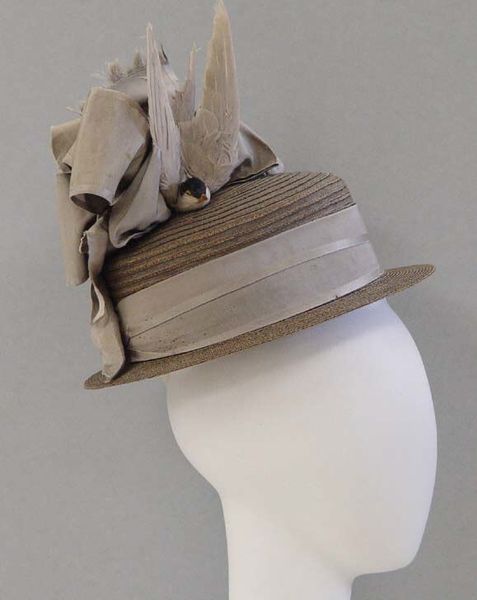
#
historical fashion
#
costume
Copyright: Public Domain
Editor: So this Evening Hat by Madame Tierce, dating from between 1893 and 1897, looks incredibly delicate. The ribbons and lace seem almost too fragile to handle. How can we understand the importance of such a piece from a historical viewpoint? Curator: Looking at this hat, I see a powerful symbol of late 19th-century feminine ideals and societal expectations. This was the Gilded Age, and conspicuous consumption, especially among the upper classes, dictated aesthetic and social norms. Think of this hat, then, as a piece of wearable art that also communicates status. Editor: So it's more than just an accessory; it's a statement. But what specific messages were they trying to send? Curator: It screams exclusivity. The intricate craftsmanship and use of luxurious materials -- satin, velvet, delicate lace -- highlight a life of leisure. Women of this era were often judged by their appearance and ability to display wealth, making such items incredibly valuable in their social lives. The hat subtly alludes to their husbands' achievements. Does this change your impression of its delicate nature? Editor: Absolutely. It's not simply delicate; it’s deliberately crafted to project power and refinement, but a power reliant on societal structures. I initially saw fragility but now recognize a calculated performance of wealth and class. Curator: Precisely. Consider also the hat's presence here in the Metropolitan Museum of Art. Its enshrinement here further solidifies its value as a historical artifact that is intertwined with fashion and high society. Editor: I never considered how the setting contributes to its meaning. Thanks, I'll never look at accessories the same way. Curator: It’s rewarding to see how historical context transforms our understanding of something as seemingly simple as a hat.
Comments
No comments
Be the first to comment and join the conversation on the ultimate creative platform.

